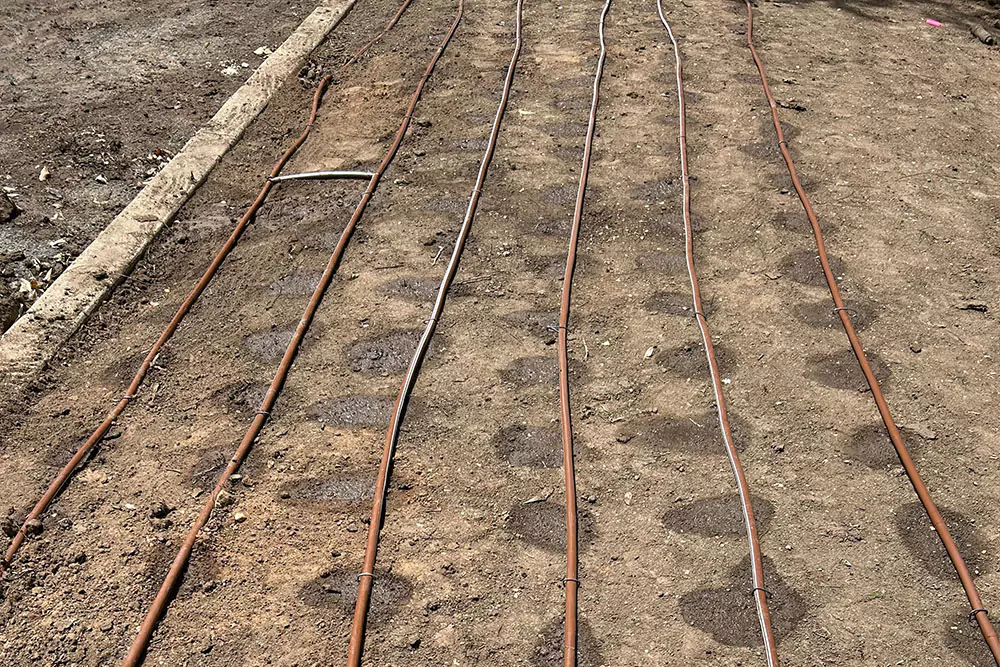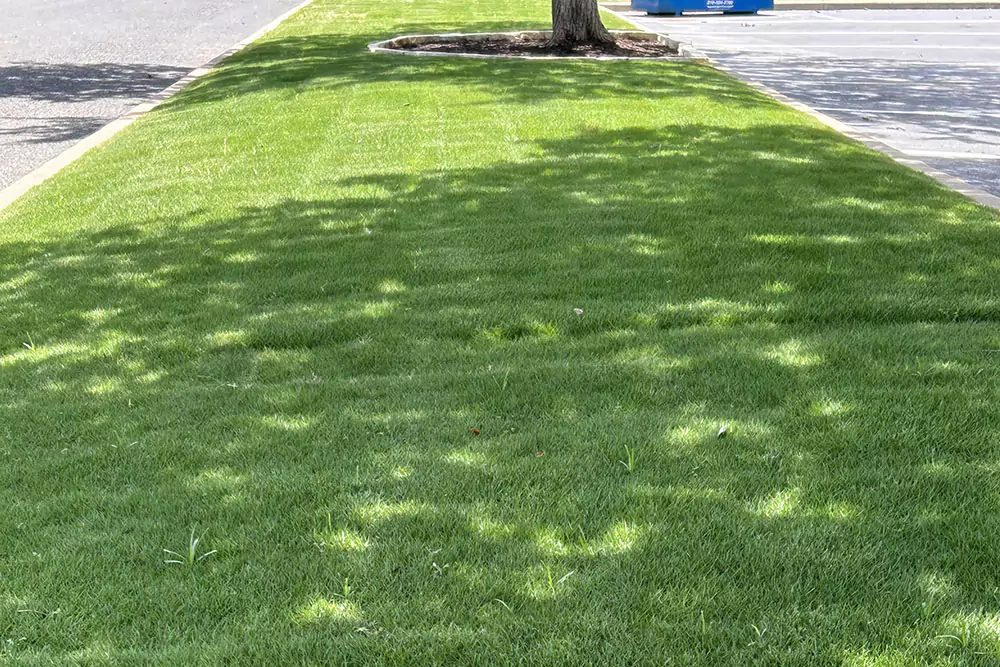Reliable Drip Irrigation Solutions
Looking for a quality drip irrigation system for your home-grown produce? Sprinkler Fix is at your service at (830) 362-8220.
Flowers, foliage, and vegetables… oh, my! How can you keep up with their watering needs without wasting too much water? Might we suggest drip sprinklers rather than traditional ones?
Sprinkler Fix specializes in designing and installing innovative irrigation systems in Fredericksburg, Texas. We know where each system excels, and our drip designs might offer the perfect solution for your property. Discover what makes them different below.
What Is Drip Irrigation?
A drip system delivers water through low-pressure irrigation. Instead of spraying water within a particular diameter, the line runs directly beneath a particular plant. The tube slowly drips water into the area, soaking the ground until the plant has enough to drink.

How Can You Benefit From This Irrigation Method?
Water Conservation
A drip line is a water-saving irrigation system. We briefly discussed how it operates differently than the average sprinkler system. Let’s dive a little further into those differences.
Since the sprinkler system features above-ground heads, it sprays water in all directions for a broader reach. That means more above-ground moisture. The sun and heat can quickly evaporate that water, preventing the plants from accessing as much moisture as possible.
Meanwhile, your drip line has emitters just above and below the dirt. The slow drip of water gradually soaks the soil enabling the plant to absorb most of the moisture and stay cool as temperatures rise.
Water Delivery at the Root
Sprinkler systems deliver water above the dirt. Much of it lands on the leaves or surrounding surfaces. Sure, dripping wet leaves are good for plants.
The water can rinse pests, cool the plant’s exposed tissues, and signal the plant to soak up ground moisture. But that isn’t the most efficient water use, is it?
You can always use a watering hose to briefly douse your plants with cool water if you want these perks. But leave the bulk of the underground watering to your drip irrigation system.
Less Erosion and Evaporation
Blasting the base of your plants with a hose or leaving the watering to a sprinkler system will slowly rinse the soil away. These methods mimic heavy rainfall, which notoriously erodes topsoil. Micro-irrigation techniques using drip lines keep the soil in place.
It fully soaks the dirt without moving it, protects root stability, and keeps nutrients near the plant.
How Sprinkler Fix Installs Drip Irrigation Systems

Consultation
We can visit you at your property to learn what you need and where we should run the line. Show off your garden, flower bed, or favorite foliage so we can get an idea of which plants to prioritize.
Drip Design
when designing a drip system for turf grass, landscape beds or veggie gardens it’s important to take into consideration the soil type, landscape design, and water source.
Drip Installation
Typically, most drip systems for landscape beds are installed above ground, stapled in place, and covered with your favorite mulch. However, when installing drip tubing under new sod, we install a small amount of soil on top of the drip tubing, staple in place and finally install your new sod over the system. As you can see in the picture above, drip systems for new sod work great!
Drip system test
once the new drip system is installed, we turn it on to flush the new system, confirm water is flowing from each drip tubing emitter, and make any final adjustments needed.
Consultation
We can visit you at your property to learn what you need and where we should run the line. Show off your garden, flower bed, or favorite foliage so we can get an idea of which plants to prioritize.
Emitter marking
When installation day comes, our technicians will put markers in the soil to show us where the emitters go. We place them around the plants you pointed out during the consultation.
Running the drip line
Next, we dig a small pathway to place the underground tube. We ensure we can access it when placing the emitters.
Installing the emitters
After running the line, we connect the water emitters. Then, we cover the line and make sure each emitter reaches the surface.
Testing the new irrigation line
Time for a test run! We initiate a watering session to make sure each emitter produces water.
Need help with Best Professional Drip Irrigation Services? Our team at Sprinkler Fix can give you the best professional service. Call us today at (830) 362-8220!
Frequently Asked Questions
Is Drip Irrigation Better Than a Sprinkler System?
No, drip irrigation is not always better than a sprinkler system. Sprinklers have their place when watering large, sprawling lawns and other areas that need broader water coverage.
Where Does Drip Irrigation Work Best?
Drip irrigation works best in areas that need consistent watering without the water supply eroding the soil. Carefully designed flower beds or gardens planted in rows are prime examples of outdoor spaces that benefit from drip systems.
Does Drip Irrigation Have Any Cons?
Drip irrigation does have a few cons. For instance, drip line maintenance is often more labor intensive than sprinkler maintenance, and drip lines won’t efficiently water fields and lawns.
